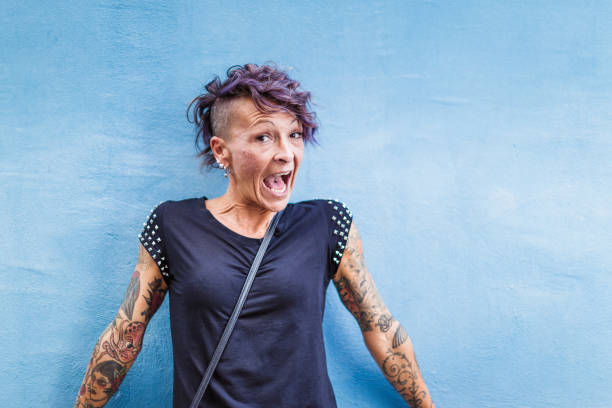
Body Art and Older Women
“I am a canvas of my experiences, my story is etched in lines and shading, and you can read it on my arms, my legs, my shoulders, and my stomach.”—Kat Von D
(Note: In this article, tattoos and body art refer to the same thing.)
Body art or tattoos are everywhere—so it seems.
Rock stars, sports figures, fashion models, and movie stars flaunt them, proudly displaying tattoos on their shoulders, backs, hands, waists, and ankles.
Why so popular?
Body art is a form of self-expression, and it is something many older women are embracing.
The Ancient Art of Tattooing
Tattooing is a practice previously used.
A 2022 article in the Wall Street Journal reported, “The earliest tattooing comes from an ice mummy more than 5,000 years ago.”
The word “tattoo” comes from the word tatau, meaning “to strike” in some Polynesian languages where this art form is pervasive.
There is an interesting article in Discover Magazine on September 4, 2021, where you can learn the ink intentions and religious roadblocks to this art of self-expression.
The Culture of Body Art Is Changing
Today, tattooing is not just for young people to use as a symbol of rebellion, as many believe.
Stereotypes associated with tattoos are people viewed as criminals or gangbangers, and those with lower levels of education or tradespeople.
According to one study, 22% of those possessing at least one tattoo had significantly higher scores on experience-seeking and the need for uniqueness.
Body art is becoming more mainstream.
You may be surprised to learn that many women of all ages have tattoos.
And older women over 50 are using body art to express individualism; to make themselves heard:
“At 55, I was the oldest in the tattoo shop that day, surrounded by millennials getting full sleeves inked or piercings for their noses, eyebrows, and lips. However, the moment I walked through the door, I felt right at home. The people there didn’t look at me as a middled-aged grandmother going through an identity crisis—they saw me as a woman who appreciated tattoos. They didn’t know that I had secretly wanted one for years.”
(Source: huffpost.com, November 12, 2022)
Yes, mature women are sporting body art in ever-higher percentages.
Who would have thought?
Body Art Is a Form of Self-Expression
Tattoos or body art can tell you a lot about the person who has them.
People use body art to show their personality, beliefs, values, or interests and represent an individual’s love of music, nature, and even pets.
For example:
- If someone has body art featuring nature or animals, they likely love being outside and enjoy being near nature.
- If someone has a tattoo of their favorite book or movie character, then it’s likely they enjoy reading books/watching movies and having interests in those specific entertainment genres.
- If someone has tattoos that have meaning behind them, then it’s likely that person holds those values close to the heart (or at least cares enough about them to put ink on their skin).
Older women embrace body art to express themselves, even after others
consider them too old for tattoos.
“Women over 60 have been around long enough not to worry about what other people think about them, and now we have the freedom to express our creativity and passions in life more fully.”
(Source: sixtyandme.com)
Mature women often use body art to show their history or way of life, what they stand for, and who they are.
A recent Pew Study confirms that roughly 15% of Baby Boomers (born between 1946 and 1964) have body art.
Older women often have body art that reflects their histories.
For instance, a senior woman will get a tattoo to remember someone or a symbol of something that happened in their life.
A tattoo can be a reminder of something they want never to forget.
And body art can be a symbol of your heritage.
Older Women Often Get Body Art on More Than One Spot
When a mature woman considers getting body art, she often finds where would be some very feminine spots on her body.
The decision to get body art in the first place is an enormous one.
You must be sure where on the body you choose to place the creation.
Here is a partial list of feminine spots for body art:
- The foot/toe
- The inner wrist
- Down the side of the ribcage
- The shoulder
- The back/the back of the neck
- The hand
- Behind the ear
- The ankle
- The breast
Body art is also easy to hide.
- Easy to hide with clothing.
- Easy to hide with makeup.
- Easy to hide with hairstyles.
- Easy to hide with jewelry.
Is Body Art Permanent?
Tattoos last forever.
Britannica:
By Rachel Feltman:
“The tattoo needles, which have ink stuck between them, puncture my skin about 50 to 3,000 times a minute. They’re going through the epidermis and into the dermis. And when making holes there, capillary action draws ink into the dermis.
“The tattoo becomes permanent when my immune system tries to save me from all these wounds I suffer. Every time the tattoo needle makes a hole, macrophage cells will start to go toward the wound to close it up.
“And because the ink is a foreign invader, the macrophage cells gobble it up to get rid of it. But instead, those macrophage cells with bellies full of ink get stuck in the gel-like matrix of the dermis.
“And they stay there forever, so the tattoo stays visible and permanent.
“Your epidermis regenerates in about two to four weeks. Over time, tattoos will fade as a body’s immune system slowly breaks down the foreign pigment particles, and the macrophages take them away to destroy them.
“But for the most part, the ink will stay with you forever.”
Possible Health Risks of Body Art
According to www.mayoclinic.org
- Allergic reactions
- Skin infection
- Bloodborne diseases
- Magnetic resonance imaging (MRI) complications
Take care of your body art:
- Keep the tattooed skin clean.
- Use moisturizer.
- Avoid sun exposure.
- Avoid swimming.
- Choose clothes carefully.
- Allow up to 2 weeks for healing.
Stigma Still Exists
As you may imagine, stigmas still exist about tattoos, especially for older people.
However, perceptions are beginning to change, and people, in general, are more accepting of body art.
After all, body art as a form of self-expression is everywhere these days!
Each body canvas tells a story; the 55+ women are even more so.
Many may question the older woman’s reasons for permanently marking her body with ink.
One woman commented: “I see my body as a blank page. Images inked into my skin are an artistic expression of who I am. Each one tells a personal story of struggle, courage, or love.”
Key Takeaways:
- Body art has an ancient history.
- The culture of body art is changing; no longer considered just for the young or the radical.
- Body art is a form of self-expression.
- Older women are embracing body art to tell their stories.
- Women may choose hidden places on their bodies to display their message.
- Body art is permanent; it lasts forever!
- There are possible health risks of body art.
- Though stigma still exists, more and more older women are experiencing the freedom and joy of using their bodies as a canvas to express their true selves.
What about you, dear reader?
Should you get body art?
Will you consider body art to express your personality and culture and show your beliefs, values, and passions?
As an older woman, will you use body art to boost your self-esteem and be helped to love your body as when you were a young woman?
Or will you embrace body art, rather subtle or elaborate, to assert your independence and tell anyone with a problem with an older, self-confident woman with body ink: “just get over it!”




